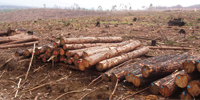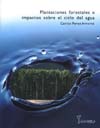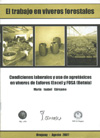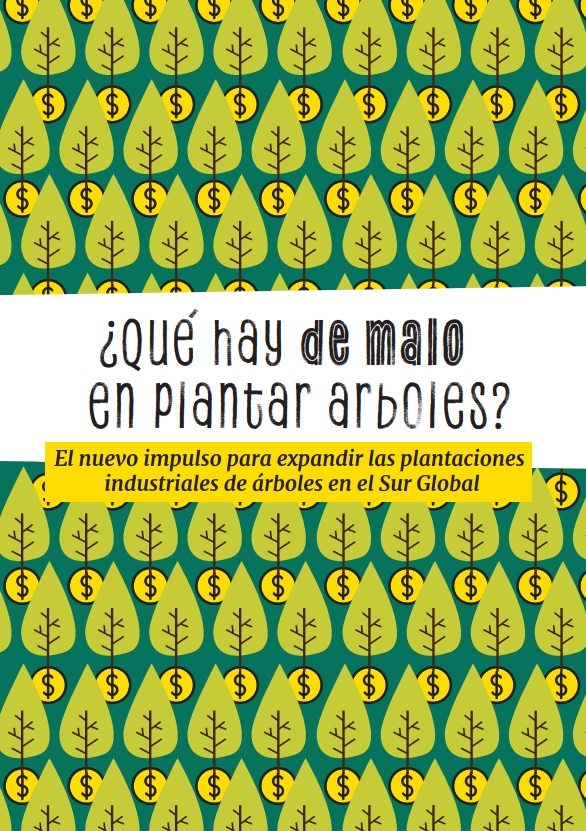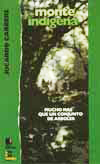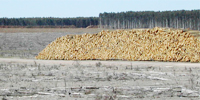Shortly before the end of last year, the Uruguayan Ministry of the Environment (MVOTMA) granted prior environmental authorization (AAP) to Montes del Plata for the construction of a pulp mill in Conchillas, in the department of Colonia. (1) Recently, in the midst of the usual suspension of activities during the Southern hemisphere summer, the company announced that it will begin work on the mill in May.
The granting of the authorization in itself comes as no surprise, since the government has been treating this investment as a foregone conclusion for months, which raises considerable scepticism about the environmental impact assessment carried out on the project.
As is typical in these cases, what the company and the Uruguayan government have most widely publicized are the millions of dollars in foreign investment involved, the jobs that will be created, and respect for international environmental standards, all aimed at justifying the new mill.
The USD 1.9 billion in investment may seem impressive. However, in order for this “investment” to take place, our country has provided the company with a whole series of benefits, such as tax exemptions for the exploitation of the land and free zone status for the site where the mill is being built. This means that we will continue to merely export unprocessed logs to this tax-free zone, where the pulp will subsequently be produced. We should also mention the investment protection agreements and memorandums of understanding with conditions imposed by foreign investors for the execution of their projects, aimed at guaranteeing that their investments are profitable.
With regard to employment, at the public meeting held in Conchillas last 9 December, the company stated that the construction of the mill would create 5,800 direct, indirect and induced jobs, and that once the mill is up and running, it would provide around 350 direct jobs.
But Colonia is in fact the department with the lowest rate of unemployment in the entire country, and moreover, the construction sector currently has the lowest rate of unemployment of any sector. In addition, the construction of a pulp mill usually involves experienced, specialized labour geared to the different tasks involved, which could very well lead to workers being brought in from abroad, as was the case with the pulp mill built in Uruguay by Botnia (UPM). Megaprojects like these require thousands of workers during the two years of construction, but the employment they generate subsequently drops to just a few hundred jobs, leaving behind a whole series of social problems, such as prostitution (especially among adolescents), a rise in domestic violence, increased consumption of alcohol, etc.
With regard to environmental emissions, it has been stressed that the necessary controls will be undertaken and respect for international environmental standards will be enforced to prevent pollution. But this does not mean very much. International standards simply reflect the levels of pollution that some international organizations deem to be acceptable, and these have been changed over time as the impacts become apparent.
Companies use the term “insignificant impacts” when emissions are released but are below the levels established by international standards. As an example, we could consider the amount of phosphorous that Montes del Plata claims it will release into the Río de la Plata, approximately 45,500 kilos a year. The company refers to this as an “insignificant” impact on the river, because it is below the maximum permissible levels, and also because the river already contains 139 million kilos above the amount allowed. The same kind of reasoning was applied to the 260,000 kilos of nitrogen to be released annually.
The scale of these megaprojects means that the slightest leak or accident would have major implications. In spite of this, it would seem that the race is on to see which company can produce the most pulp. From the one-million-ton output of UPM, we have now moved up to almost one and a half million from Montes del Plata (the company has been authorized to produce up to 1.45 million tons).
Meanwhile, the construction of a pulp mill and its size are directly linked to the need for wood to supply it. No consideration is being given to the actual size of the territory occupied by foreign companies for the production of a raw material that will subsequently be exported with virtually no value added. Montes del Plata owns some 250,000 hectares of land in Uruguay – an area that is five times the size of the entire department of Montevideo.
The impacts of large-scale monoculture tree plantations have become increasingly evident as these plantations continue to spread and as they continue to be operated for longer periods of time. The facts clearly demonstrate the falseness of the argument that “the plantations are already here” and that the only possible use of the trees on them is pulp production. When this claim was made, we had around 200,000 hectares of tree plantations, and today there are over a million. And now Montes del Plata is saying that another 100,000 hectares of plantations are needed to supply the raw material for its future pulp production.
We share the concern expressed by Walter Zimmer, the intendente or head of the departmental government of Colonia, and a number of local farmers, who are well aware of the productive and social value of the land in their department and have spoken out against the potential use of that land for tree plantations. Zimmer stressed that “50% of the department’s revenues come from tourism and the other 50% from agricultural production,” thanks to the high fertility of the soil. “This is a food-producing department, and the quality of the land in Colonia cannot be used for planting eucalyptus trees. That would mean condemning the land to producing nothing but eucalyptus trees. We do not agree with monocultures. On this point we all share the same view: we cannot mistreat the land, which is a non-renewable resource. When you plant eucalyptus trees on it, that land can never be recovered.” (2).
There is clearly no political consensus on the purported benefits of these projects. In a recent article, the newspaper La Diaria quoted representatives of the ruling Frente Amplio party who raise doubts about the benefits that the investment by Montes del Plata will bring to the country. (3)
All of this serves to reaffirm the need for serious reflection on these types of extractive projects, which reinforce a national development model that fosters the concentration of land ownership and seriously compromises our soil and water.
Grupo Guayubira
January 2011
Notes:
1.- The project being undertaken by Montes del Plata – a joint venture between the Swedish-Finnish company Stora Enso and the Chilean company Arauco – comprises a pulp mill, electric power plant and port facilities.
2.- “Zimmer (PN): ‘Faltó coordinación’ entre Gobierno e Intendencia de Colonia por planta Montes del Plata” http://www.el.espectador.com/1v4_contenido.php?m=&id=203097&ipag=1
3.- “Celulosa que me hiciste mal” http://ladiaria.com/articulo/2011/1/celulosa-que-me-hiciste-mal/#gallery


